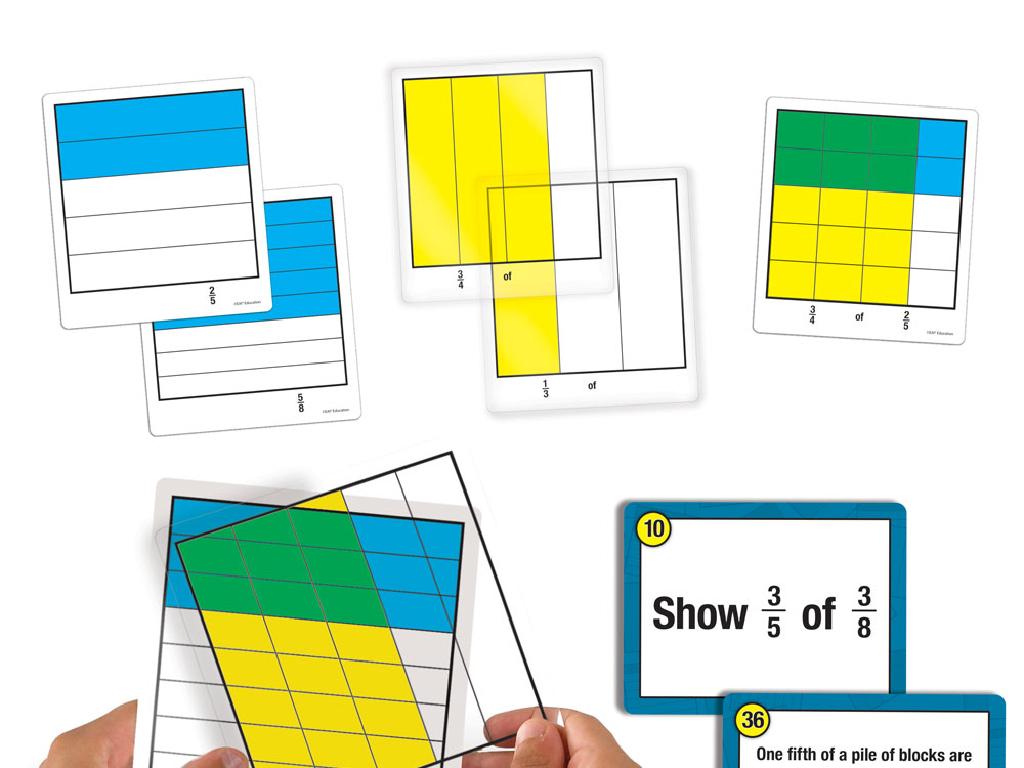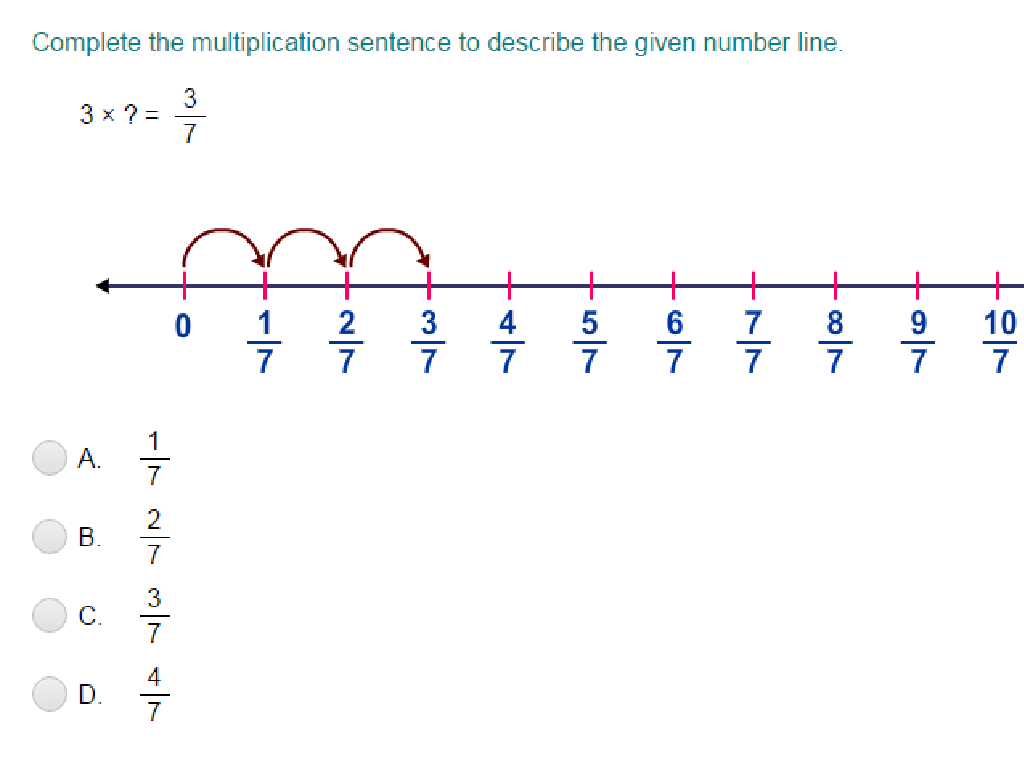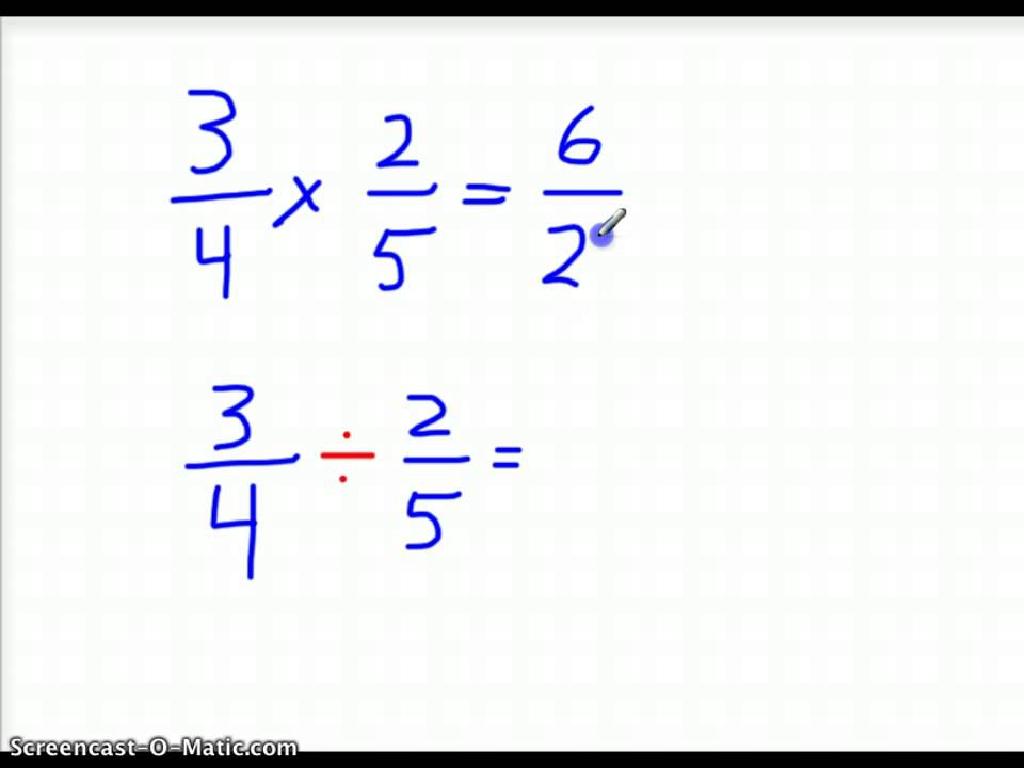Solve One-Step Addition And Subtraction Equations With Decimals And Fractions
Subject: Math
Grade: Sixth grade
Topic: One-Variable Equations
Please LOG IN to download the presentation. Access is available to registered users only.
View More Content
Mastering One-Variable Equations
– Understanding equations
– Equations are like puzzles, we find the value of the unknown.
– One-variable equations explained
– It’s an equation with one unknown, like x + 3 = 7.
– Why this skill matters
– Knowing this builds a foundation for algebra.
– Preparing for advanced math
|
This slide introduces students to the concept of one-variable equations, a fundamental building block in algebra. Start by explaining that equations are like puzzles where we solve for the unknown value. Then, define one-variable equations as those that contain only one unknown, which we aim to find. Emphasize the importance of mastering this skill as it is crucial for understanding more complex math concepts in the future. Encourage students to think of equations as challenges to be solved, and assure them that with practice, they will be well-prepared for advanced math topics.
Decimals and Fractions Review
– Recap: Decimals and fractions
– Decimals represent parts of a whole, like 0.5 is half. Fractions use numerators/denominators, like 1/2.
– Everyday examples
– Money uses decimals ($0.75), recipes use fractions (1/2 cup).
– Converting decimals to fractions
– To convert a decimal to a fraction, write it over 1 followed by as many zeros as there are digits after the decimal point, then simplify.
– Converting fractions to decimals
– Divide the numerator by the denominator to convert a fraction to a decimal.
|
Begin with a brief review of decimals and fractions to ensure students recall these fundamental concepts. Use relatable examples such as money for decimals and cooking measurements for fractions to illustrate their use in daily life. Teach conversion by explaining the process step-by-step: for decimals to fractions, place the decimal over the appropriate power of 10 and simplify; for fractions to decimals, divide the numerator by the denominator. Provide practice problems for both conversions to reinforce the lesson. This foundational knowledge will be crucial for solving one-step equations involving these numbers.
Introduction to Addition Equations
– Define an addition equation
– An equation that shows two values being added together
– Parts of an addition equation
– Variables are unknowns, constants are fixed numbers, and operators are symbols like +
– Solve one-step equations
– To find the value of the variable, isolate it by subtracting the constant from both sides
– Practice with whole numbers
– Example: x + 3 = 7, what is x?
|
This slide introduces students to the concept of addition equations, which are the foundation for understanding algebra. Start by defining an addition equation and then explain the different parts: variables represent unknown quantities, constants are known values, and operators indicate the operation being performed. Demonstrate solving a simple one-step addition equation using whole numbers, such as x + 3 = 7, and show how to isolate the variable by performing the inverse operation. Encourage students to practice with similar equations and reassure them that the same principles apply when working with decimals and fractions.
Solving Addition Equations with Decimals
– Understand decimal addition equations
– Equations with decimals are solved like whole numbers
– Example: x + 3.5 = 7.8
– Find what number added to 3.5 gives 7.8
– Follow step-by-step solution
– Isolate x by subtracting 3.5 from both sides: x = 7.8 – 3.5
|
This slide introduces students to solving one-step addition equations that include decimals. Start by explaining that the process is similar to solving equations with whole numbers. Use the example x + 3.5 = 7.8 to demonstrate the solution process. Show students how to isolate the variable by performing the same operation on both sides of the equation. In this case, subtract 3.5 from both sides to find the value of x. Ensure students understand each step and encourage them to solve similar equations. Provide additional practice problems with varying decimal places to reinforce the concept.
Solving Addition Equations with Fractions
– Solve equations with fractions
– Example: x + 1/4 = 3/4
– If x + 1/4 = 3/4, what is x? Subtract 1/4 from both sides to find x.
– Find common denominators
– Common denominators are needed to add or subtract fractions.
– Add fractions correctly
– Ensure the numerators are added while the denominator remains the same.
|
This slide introduces students to solving one-step addition equations that include fractions. Start by explaining the concept of like terms and the necessity of common denominators when dealing with fractions. Use the example x + 1/4 = 3/4 to demonstrate the process of isolating the variable by subtracting 1/4 from both sides of the equation. Emphasize the importance of keeping the denominator consistent while combining the numerators. Encourage students to practice with additional examples and provide guidance on checking their answers by substituting the value of x back into the original equation.
Introduction to Subtraction Equations
– Define subtraction equation
– An equation that shows the difference between two values
– Components of subtraction equations
– Terms include minuend, subtrahend, difference
– Solve one-step equations with whole numbers
– Isolate the variable to find its value
– Example: x – 3 = 12
– Find x when x – 3 = 12 (x = 15)
|
Begin with a definition of a subtraction equation, emphasizing that it represents the difference between two values. Explain the parts of the equation: the minuend (from which another number is subtracted), the subtrahend (the number being subtracted), and the difference (the result). Demonstrate solving a simple one-step subtraction equation using whole numbers, such as x – 3 = 12. Show the process of adding 3 to both sides of the equation to isolate x, leading to the solution x = 15. Use this example to solidify the concept and prepare students for more complex equations involving decimals and fractions.
Solving Subtraction Equations with Decimals
– Understand subtraction equations
– Example: x – 2.3 = 5.6
– Find what number minus 2.3 equals 5.6
– Follow step-by-step solution
– Add 2.3 to both sides to isolate x
– Practice with similar problems
– Try solving x – 3.7 = 4.2 or x – 1.5 = 2.8
|
This slide introduces students to solving one-step subtraction equations that include decimals. Start by explaining the goal: to find the value of the variable, x. Use the example x – 2.3 = 5.6 to demonstrate the process. Show students how to isolate the variable by performing the inverse operation, which in this case is adding 2.3 to both sides of the equation. This will give them x = 5.6 + 2.3. Solve the equation together to find the value of x. Encourage students to practice with additional problems, adjusting the numbers to ensure they understand the process rather than memorizing the solution. Provide guidance on keeping decimal points aligned and remind them to check their work by substituting the value of x back into the original equation.
Subtraction with Fractions
– Solve equations with fractions
– Example: x – 1/3 = 2/3
– Find the value of x that makes the equation true
– Find common denominators
– Common denominators help combine fractions
– Use denominators to solve
– Apply common denominators to find x
|
This slide focuses on teaching students how to solve one-step subtraction equations that include fractions. Start by explaining the concept of finding a common denominator, which is essential for combining fractions. Use the example equation x – 1/3 = 2/3 to illustrate the process. Show students how to multiply each term by the common denominator to eliminate the fractions, making it easier to solve for the variable x. Encourage students to practice with additional examples and ensure they understand the importance of common denominators in solving equations with fractions.
Solving One-Step Equations: Decimals & Fractions
– Solve x + 0.75 = 2.25
– Subtract 0.75 from both sides to find x
– Solve x – 5/8 = 1/8
– Add 5/8 to both sides to find x
|
This slide is aimed at providing practice problems for solving one-step equations involving decimals and fractions. For the first example, guide the students to subtract 0.75 from both sides of the equation to isolate the variable x. For the second example, instruct them to add 5/8 to both sides to find the value of x. Emphasize the importance of performing the same operation on both sides of the equation to maintain balance. Encourage students to work through these examples in their notebooks and be prepared to discuss their solutions. Provide additional similar problems for students to solve independently, ensuring they get ample practice with both decimals and fractions.
Equation Solving Race: Class Activity
– Pair up and solve equations
– Present a solution on the board
– Discuss various solving methods
– Did you add, subtract, or use another strategy?
– Reflect on the activity
– Think about what you learned from others
|
This activity is designed to encourage collaboration and discussion among students as they engage in solving one-step addition and subtraction equations with decimals and fractions. By working in pairs, students can share their problem-solving strategies and learn from each other. As each pair presents their solution, encourage the class to observe different methods used, fostering a deeper understanding of the concepts. After the presentations, lead a class discussion on the various methods and encourage students to reflect on the benefits of seeing multiple approaches to the same problem. Possible activities for different pairs could include solving equations with different levels of complexity, using manipulatives to represent the equations, or creating their own equations for their partner to solve.
Wrapping Up: Decimals & Fractions in Equations
– Review of today’s lesson
– Practice makes perfect
Consistent practice is key to mastering math skills.
– Homework: 10 one-step equations
Include 5 decimal and 5 fraction problems.
– Next class: Sharing solutions
Be prepared to discuss how you solved the equations.
|
As we conclude today’s lesson, it’s important to recap the key concepts of solving one-step equations involving decimals and fractions. Emphasize the importance of practice in mastering these types of equations. For homework, students are assigned 10 problems to reinforce their understanding. Ensure the homework includes a mix of both decimals and fractions to provide a comprehensive review. In the next class, we’ll have a discussion where students can share their solutions and methods, which will help consolidate their learning and allow for peer learning opportunities.






